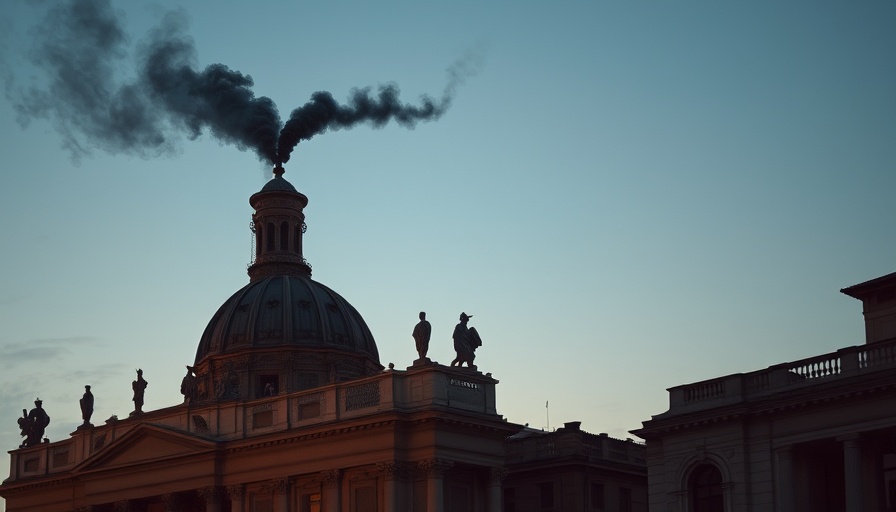
The First Day of the 2025 Papal Conclave: A Moment of Anticipation
On May 7, 2025, the Sistine Chapel buzzed with anticipation as cardinals from around the globe gathered to participate in the papal conclave. This assembly was a pivotal event for the Catholic Church, tasked with selecting the successor to the late Pope Francis, who passed away after a long tenure of 12 years. As night descended over Rome, the sight of black smoke curling from the chapel chimney informed the world that no decision had yet been reached in the first vote. This symbolic gesture, significant within the context of papal elections, emphasizes the weight of this decision for the church's 1.4 billion followers.
Understanding the Significance of the Black Smoke Signal
The phenomenon of black smoke is steeped in tradition. It serves as a stark reminder of the cardinals' role as guardians of the Church's future, and it reflects their challenging task. Every cardinal has sworn an oath of secrecy and fidelity regarding the election process, an element that underscores the profound sense of responsibility they carry. The cardinals’ inability to come to a consensus in the first round is not merely procedural; it represents differing visions for the future of the Church at a time when many pose questions about its relevance in today’s rapidly changing world.
The Diversity of Votes: A Global Perspective
This conclave is historic, representing perhaps the most diverse group of electors yet, with cardinals hailing from over 70 countries. This diversity captures the unique perspectives and needs of a global Church facing numerous challenges, from technological advancement to moral dilemmas. Cardinal Giovanni Battista Re highlighted in his pre-conclave address the importance of this unity, asserting that all cardinals should seek a leader capable of guiding the Church amidst great societal change.
Future Predictions: What Lies Ahead for the Papacy
As the conclave progresses, many observers anticipate that the cardinals will strive to elect a pope who resonates with modern concerns while remaining faithful to the Church’s core teachings. With social issues taking a central stage, the heart of discussions within the conclave likely revolves around how the Church can address contemporary issues like climate change, migration, and technological ethics, all while preserving faith and promoting moral values.
Cardinals' Responsibilities: A Call for Connection
This solemn task is not solely about electing a new leader; it is a moment infused with spirituality and hope for renewal. During their final mass in St. Peter's Basilica, Re emphasized the need for spiritual energies to awaken the consciences of believers, pointing out that the responsibilities of the newly elected pope will extend beyond the Vatican’s walls into the lives of millions around the world.
Understanding the Conclave Process: Secrecy and Tradition
The conclave is shrouded in secrecy, a characteristic that heightens the suspense of each round of voting. The cardinals’ vow to keep discussions and decisions private ensures that the implications of each choice made can be deeply contemplated without outside influence. This time-honored practice not only maintains decorum but also respects the weight of the history they are part of.
Encouraging Engagement and Reflection
As the conclave unfolds, viewers are encouraged to engage with this pivotal moment in history, reflecting on its implications both for the Catholic Church and global society. The nuances of church leadership touch upon themes of faith, community, and moral guidance, offering a rich terrain for discussion and debate.
In the coming days, we await the signal of white smoke, an indication that a new pontiff has been elected. This moment will undoubtedly shape the future direction of the Catholic Church, impacting not just its followers but also the moral framework of society at large. Stay informed on this historic event and its ramifications through various news platforms that highlight national and international perspectives.
 Add Element
Add Element  Add Row
Add Row 



Write A Comment